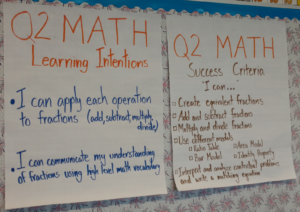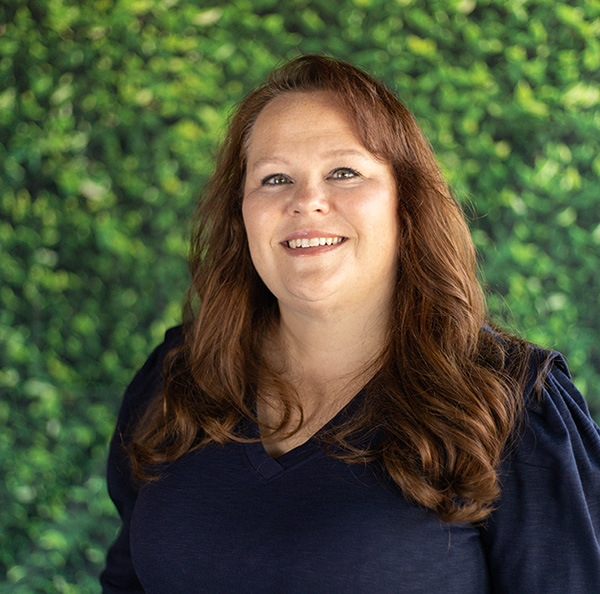When you don’t know the expectations in the classroom, how do you feel?
“I feel frustrated and confused. I don’t want to do the work because I have no idea what I am supposed to do or what to even ask my teachers.”
When do you feel the most motivated in school?
“It’s when I am going deeper and deeper in the learning, and I can show that I am actually learning.”
Interview with an 8th Grade Student
What may seem like a comment from one student, echoes through the research as a common issue for all learners. Learners want clarity; they need it and so do teachers.
My first years in the classroom, I felt like I was stumbling around in the dark when it came to having clarity about what my students needed to learn. I felt like I was looking through a pair of borrowed glasses that had a much stronger prescription than I needed. It felt out of focus, fuzzy.
You might be thinking, “Read your standards, use your curriculum documents.” I assure you, I did. I just didn’t find the level of clarity I wanted; I needed. I felt I was often trying to engage students in fun activities or interesting anecdotes but that we all lacked a true purpose and meaning in the learning, other than to complete assignments.
What I came to learn years later is that the struggle to find clarity is a worthy one. In fact, when teachers and students have clarity about what is to be learned, why it matters, and what success looks like, it can more than double the average rate of learning (Hattie, 2023). I don’t know about you, but when I learned that it could accelerate learning in my classroom, I was all in. What powerful magic was this and how could I get it?
Why Clarity Matters
I knew that not having clarity was anxiety causing for me, but what I didn’t realize was that it was for my students as well. According to the book, Clarity in the Classroom by Michael Absolum, “When we are clear, research shows that there are important shifts for the students. Their motivation improves, they stay on-task, their behavior improves, and they are more apt to engage in self-regulation. In other words, they take more responsibility for their learning.”
Interestingly, clarity impacts both the outcomes, or effects of education on achievement, but also students’ affect, or feelings, motivations, and dispositions to engage in meaningful learning. In addition, it dictates whether or not students will invest and reinvest in experiences, including productive struggle.
Achieving clarity can be energizing for everyone. In this reflection from Susie Mauldin, she explains her why for focusing on clarity.
Once we understand the impact of students and teachers having a shared understanding of what is to be learned, we can still be overcome by all the information to sort through from standards, curriculum, other educators, etc. So what do we need? A few simple, doable steps that can make a profound difference.
How Does Clarity Happen?
First, determine 3-5 big-picture learning outcomes that students must know and be able to do in one course or subject for the grade level. While there are a great deal of standards, memories and recall depend on how strong neural networks and connections are in our brains, and so, students need us to connect skills and knowledge to big concepts. The concept serves as a coat hanger of sorts to hang ideas, emotions, connections, skills and knowledge to.
Then, use the concepts to develop Learning Intentions or goals for the year. These serve as destination statements and answer a critical question for students, “Where are we going in our learning?”
For example, if the concept is to understand the impacts of weathering, the Learning Intention might be: “We are learning to ________.” It could also be put in the form of a question, “How does ______?”
Consider this grade 5 example from Van Buren Elementary School in Caldwell, ID. Notice two Learning Intentions for the second quarter of the school year. No matter the grade level or subject you teach, the same can apply to providing students with big picture Learning Intentions that they have time and support in making progress toward and achieving over time.

Next, pair the Learning Intentions with Success Criteria, which describe the ingredients to meeting the intention so students have a pathway to meeting the expectation. Notice in the example how several Success Criteria are paired with the intentions to provide students with additional information about how they will meet the expectations. Shirley Clarke explains, “The worst learning scenario is to be unaware of the expectations or how your work will be judged and to have no guidelines about how to achieve the objective in the first place (Clarke, 2008, p. 81).
Once the basic expectations are established, learners require a few additional, student-friendly ways to understand what successful work looks like for each Success Criteria, to know how they are making progress, and to be continually informed about their next steps in learning in order to meet the Success Criteria.
Check out a few additional blogs to explore such next steps in developing clarity for learners.
- Co-Constructing Success Criteria: The What, Why & How of Sharing Clarity with Learners
- Sharing Clarity with Students: 15 Ways to Co-Construct Success Criteria
Bottom line: Clarity matters! With a few simple and doable steps, students and teachers can set their anxiety aside and dig into learning together.


